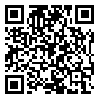Tue, Aug 12, 2025
[Archive]
Volume 21, Issue 4 (December 2025)
IJEEE 2025, 21(4): 3263-3263 |
Back to browse issues page
Download citation:
BibTeX | RIS | EndNote | Medlars | ProCite | Reference Manager | RefWorks
Send citation to:



BibTeX | RIS | EndNote | Medlars | ProCite | Reference Manager | RefWorks
Send citation to:
Saxena A. A study on the impact of various modulation and coding schemes on wireless (WiFi-6) performance. IJEEE 2025; 21 (4) :3263-3263
URL: http://ijeee.iust.ac.ir/article-1-3263-en.html
URL: http://ijeee.iust.ac.ir/article-1-3263-en.html
Abstract: (394 Views)
The performance of wireless networks depends on measuring the radio characteristics between the Access Point (AP) and Client Station (STA) within the same Base Service Set (BSS). In areas with high demand for wireless services, multiple wireless networks may overlap, causing interference and negatively impacting the performance of individual users and networks. This interference makes wireless radio channels more susceptible to interference from surrounding energy, directly affecting wireless networks' throughput. A new spatial reuse IEEE802.11ax standard has provided the solution to address this issue. This standard performs a clear channel assessment procedure between the AP and STA before assigning the channel for traffic, thus reducing channel collision and improving the effectiveness of radio resources in wireless networks. Additionally, the quality and availability of radio resources of overlaying networks would improve the usage of radio channels. This study assesses how spatial reuse, combined with different modulation with coding schemes and clear channel assessment, affects channel throughput. The results show that integrating spatial reuse can boost channel throughput by 18-20%, significantly enhancing network performance.
Type of Study: Research Paper |
Subject:
Ad-Hoc Communications
Received: 2024/04/24 | Revised: 2025/07/17 | Accepted: 2025/05/06
Received: 2024/04/24 | Revised: 2025/07/17 | Accepted: 2025/05/06
| Rights and permissions | |
 |
This work is licensed under a Creative Commons Attribution-NonCommercial 4.0 International License. |







